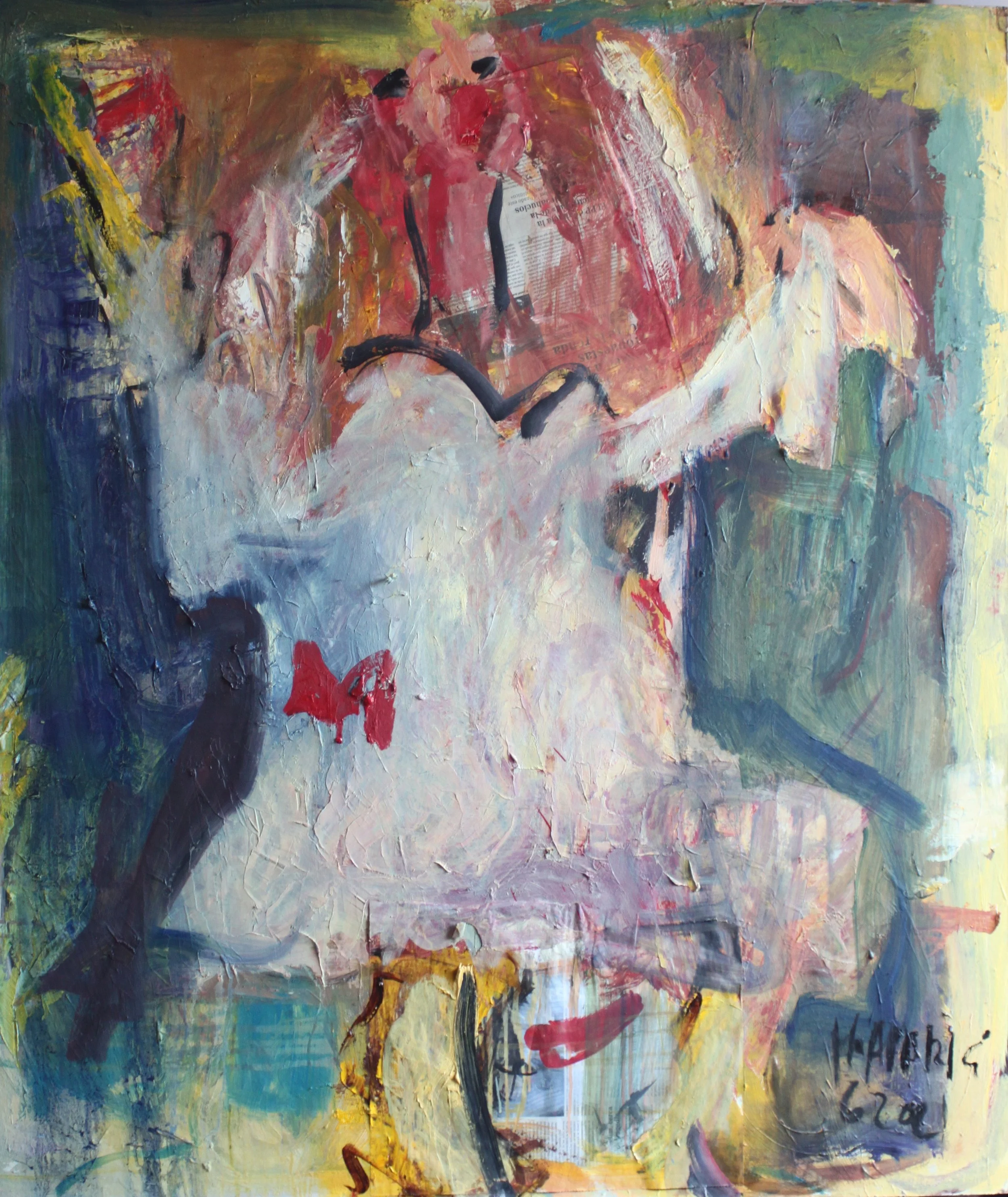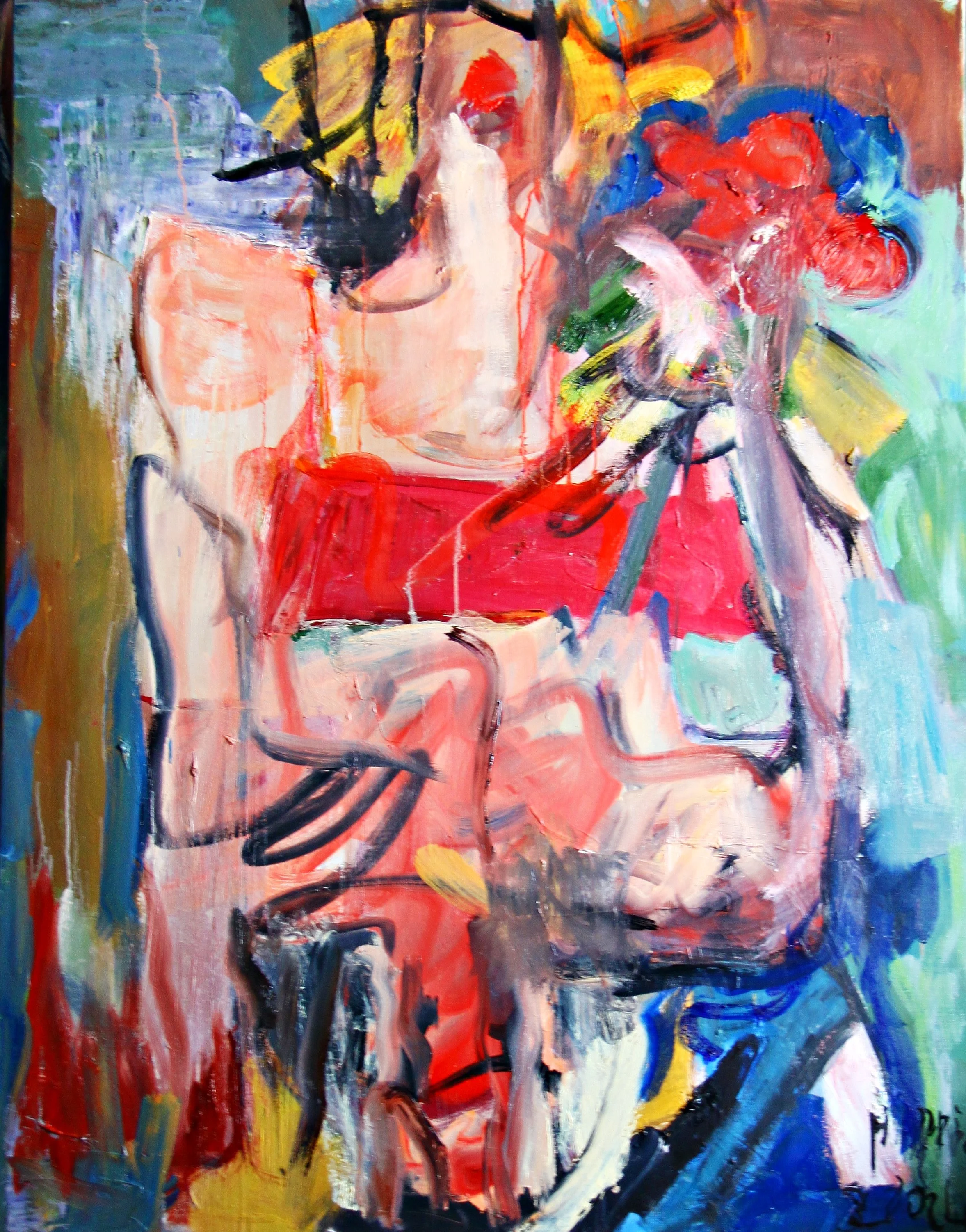Interview with María Aparici
You have traversed a path from traditional painting techniques to incorporating interior design principles in your art. How do you reconcile the structural discipline of interior design with the fluid expressions of traditional painting in your work?
Hand-drawn plans, complex interior design with AutoCAD, delirious perspectives in swells, rigid geometries, all this entails discipline, but the same applies to the round and undulating proportions made with plumb line and charcoal of a marble Discobolo under the attentive and demanding gaze of Don Amadeo Roca.
I am not a realist painter, I do not have the patience to reproduce reality as it is.
My figurative portraits are the only identity close to reality in terms of shapes and colors.
During your formative years, you studied under Amadeo Roca. Could you discuss a specific technique or philosophical approach you learned from him that continues to influence your artistic practice today?
Amadeo Roca discovered my essence and encouraged me to develop my existence under the rules of philosophical metaphysics. The experience has transported me to a world where disruptive NFTs want to buy my identity and universal language, mold it, and constrain it in a cold rationalization, planning and very subjective systematization, that is, a trading card.
Experience achieves the extraordinary, the unpredictable, the expressive, exceptional, significant, the prodigious, without it the banal subjective abounds, in series, it is all so ambiguous, so IMPENETRABLE, so current, so ridiculous.
Your art exhibits a fusion of expressionism and abstraction, often intertwined with figurative elements. Could you elaborate on a specific piece where this synthesis serves as a critique or celebration of contemporary cultural or social phenomena?
Coming from Columbia and Parsons from New York I didn´t feel any sense of the freedom I had there at Fine Arts in Madrid. Too Spanish and too macho.
A magic performance of the unexpected gives the viewer the mystery of deciphering.
The emotional and psychological responses to an environment of conflicts, social and cultural disorders, political changes and the traditional and archaic nature of a part of Spanish society, make me complain through my works, torn expressionist distortions. The use of color and the simplification of shapes are my simplest way of inviting the viewer to share my feelings.
Your work often depicts women in various states of distortion, which you've described as a form of protest. Can you discuss how your portrayal of women challenges or reinforces societal views on femininity and power?
A vengeance to the decadent hidden morality that is causing me distress is always present in my work distorted figures of women. I explore the subject of women in enchanting recurrence, restaging them in contexts and combinations.
Although a figurative painting pushes you away because the picture is a close image and you can’t escape. I always invent new forms in painting because it always behaves differently inviting the viewer to my magical and strange world, which in reality it´s not mine anymore because it´s got its own universe and will.
In works where you choose a more abstract approach, what narrative or message do you aim to convey through abstraction, and how do you ensure it resonates with your audience?
Abstraction
Painting moralizes and can perform multiple duties at once without representing reality.
In abstract works there are more ways to invite the viewer. I want them there with me when I am dancing lines, gestures and colors on the stage is the imagination.
At times, I am an abstract artist because my brush stroke and spontaneous gestures are free from imposing disciplines. I paint without previous notes, papers or drafts. It goes all at once onto the canvas.
Having exhibited internationally, from Davos to New Delhi, how do you find your multicultural experiences influence the thematic and stylistic choices in your paintings?
Having exhibited internationally, it has not meant any change or novelty in the women's issue. There is a type of submissive woman who will never change.
On the other hand, each country has its traditions, customs and rules that I may not like as a person, but as an artist I cannot change them, at least improve them.
With a body of work that often challenges and provokes, how do you handle varied interpretations or criticisms of your art, especially from different cultural perspectives?
Great works transcend time, and the good artist has to be the mysterious creator of that reality that lasts, he is the nostalgic interpreter of his time, but with the palpitating experience of knowledge of the culture, and the history of other times.
It has to be an authentic art that shocks, combining reason and intelligence that provokes taking into account the cruelty and monstrosity of life, the pain of expression, energy and meaning.
You've been awarded prestigious prizes like the Michelangelo and Botticelli Awards. How do these recognitions influence your creative process, if at all? Do they affirm your artistic direction, or perhaps steer you towards experimenting with new themes or techniques?
Show the reason for an ESSENCE and talk about the experience through EXISTENCE, it is not fashionable, magic and illusion have been lost, the emotional is now ironic, horror and chill are ambiguities that end in paradox.
It is difficult for the creative capacity of the current artist to think or reflect, he does not have time. They are thoughts so ephemeral that they are lost in seconds in the creative space.
Selfies, influencers are all about performing in front of the audience, mirror.
Today, the cruel, the brutal, the ugly are marginalized by a mostly female elite of the beautiful, the cult of the mirror, and the reality is that we must have the grotesque for it to be true art, because what is happening today is still grotesque without being art.
Over the years, how has your choice of materials and mediums evolved, and what new materials or techniques are you currently exploring in your work?
I have tried all mediums, procedures and styles throughout my 25-year career.
Style is the unconscious form of production of FORMS by grouping them.
My intuition tells me that if I am going to continue creating forms, for the development of an idea outside of logical thinking, where all the possible unrealities that my imagination invents appear, that all those forms of expression, and their unforeseen and possible solutions and combinations, in a concentration and orchestration of impulses, forces and artistic information, but also philosophical, religious, psychological, social and political, the best medium is undoubtedly The Painting.
Looking ahead, what themes or issues are you passionate about addressing in your future projects? How do you see your work influencing or contributing to the broader conversation in contemporary art?
The artist's work must be committed to the culture and influences of the time, I have repeated it a thousand times, to be able to express ideologically and conceptually the fashion of the moment in the social and political sphere, to protest, to the extent possible. and try to change what is erroneous, archaic, obsolete traditions that no longer contribute anything.
It is created over time without ignoring personal obsessions, art is born from the outburst of FORCES that have been accumulated and deposited in a living spirit, in that methodical and dialectical coupling of forms, and style, a work is born.













